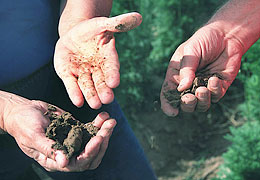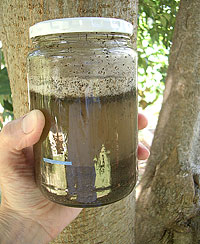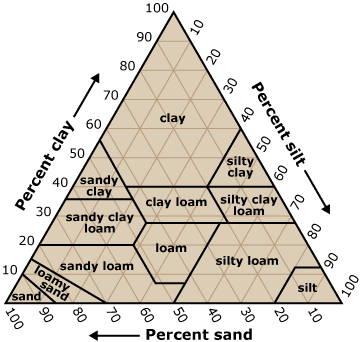- Home
- Learn about salinity
- Get to know your site
- Design a landscape
- Solve a problem
- Other information
Salinity Management Guide

Assessing the physical characteristics of soil
Getting a feel for texture
One way to get a rough idea of a soil's texture is to wet the soil, loosen it up, and pick some up in your hand and squeeze it. If you can mold it with your fingers into a firm little ball, then it probably contains a lot of clay. The firmer the ball, the more clay it contains. If the soil in your hand cannot be made into a ball, then it likely contains a lot of sand. The looser the ball, the more sand it contains. Anything in between indicates a certain amount of silt.


Another quick way to approximate a soil's texture is to fill a quart-sized jar about 1/3 with soil. Pack the soil into the bottom of the jar, then mark the level of the soil on the side of the jar. Add water until the jar is about 3/4 full. Cap the jar and shake it vigorously for several minutes. Now set the jar down and allow the particles of soil to settle. After about a minute, the particles of sand will move to the bottom. After a few more minutes, particles of silt will settle out and the sediment in the jar will become layered. After about an hour, the silt will be completely settled and only particles of clay will remain suspended in the water. Measure the thicknesses of the layers of sand and silt and compare them to the original thickness of the packed soil. This will give you approximate percentages of the sand and silt in the soil. Subtract these two percentages from 100 to find out the approximate percentage of clay in the soil.
The above field tests roughly indicate the texture of a soil. A more precise way to determine a soil's texture is to submit samples of the soil to a commercial analytical laboratory.
| « Previous page | Next page » |